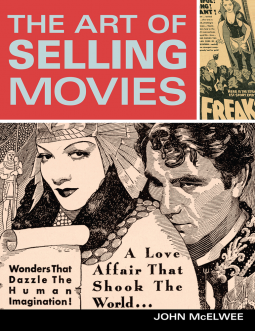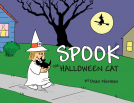
The Art of Selling Movies
by John McElwee
This title was previously available on NetGalley and is now archived.
Send NetGalley books directly to your Kindle or Kindle app
1
To read on a Kindle or Kindle app, please add kindle@netgalley.com as an approved email address to receive files in your Amazon account. Click here for step-by-step instructions.
2
Also find your Kindle email address within your Amazon account, and enter it here.
Pub Date Feb 28 2017 | Archive Date Feb 20 2017
GoodKnight Books | Paladin Communications
Description
A Never-Before-Seen Look at How the Hearts, Minds & Wallets of Moviegoers Were Won in Hollywood’s Golden Age
RICHLY ILLUSTRATED HARDCOVER REVEALS THE COLORFUL, FASCINATING HISTORY OF AMERICAN FILM ADVERTISING
From the silents through the mid-1960s, the Classic Era of American Cinema saw men and women with no aptitude for art become artists, wizards with words, master persuaders. Unlike other ad folk, theatre operators sold nothing more tangible than a couple hours’ amusement, and gave customers nothing to carry home beyond memories each hoped would be pleasant. Creating powerful, compelling advertisements wasn’t merely a matter of friendly competition between clever marketers – it was what the very livelihood of small-town theatre managers and cinema bigwigs alike depended on.
In The Art of Selling Movies [GoodKnight Books, February 28, 2017], lifelong film enthusiast and noted historian John McElwee reveals how the promise of happy times was aggressively marketed daily amidst heated competition in the Amusement Pages of U.S. newspapers, creating a thriving industry that continues to influence American culture today.
Unlike other classic film interest books, The Art of Selling Movies shifts the spotlight away from great directors and iconic stars in favor of the “faceless folk” who awoke desire for movies in the masses. A vibrant full-color, 300-plus-page hardcover featuring hundreds of never-before-seen images and clippings (painstakingly restored using technology that has only made such restoration possible in the past decade), in The Art of Selling Movies, McElwee also explores the intersection of commercialism, folk art, fine art, newspaper production, and regional demographics.
“These ads exerted an emotional appeal,” says McElwee, “and sparked a ‘must-see’ mentality that merchandisers still seek to convey today.
“The variety of ads for an individual film were infinite. For as many bookings as Citizen Kane had, there were that many different selling approaches,” he continues. “The best of vintage theatre ads can still teach advertisers a great deal about the art of selling.”
An illuminating and entertaining exploration of how the hearts, minds, and wallets of American moviegoers were won in Hollywood’s Golden Age, The Art of Selling Movies will delight American history buffs, Classic Era film aficionados, and modern-day Don Draper types alike.
Available Editions
| EDITION | Other Format |
| ISBN | 9780996274043 |
| PRICE | $39.99 (USD) |







